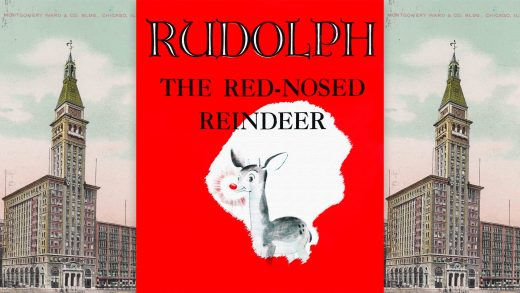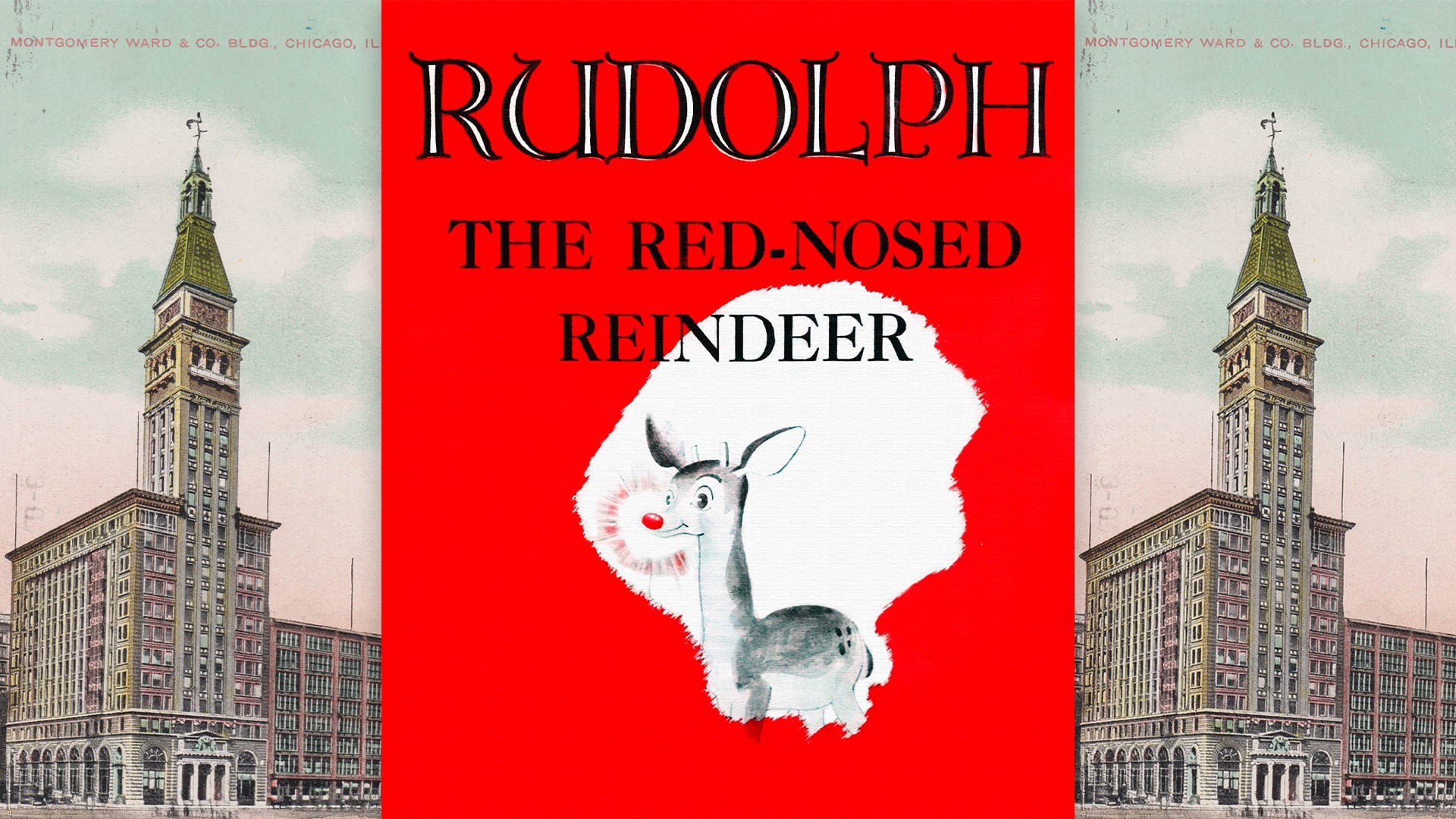The surprisingly corporate retail origin story behind ‘Rudolph the Red-Nosed Reindeer’
BY Shannon Cudd
Thanks to a many versions of books, a catchy Christmas song, multiple TV specials, and countless products, Rudolph the Red-Nosed Reindeer certainly is the most famous reindeer of all.
His origin story, however, is surprisingly corporate. It speaks to the power of giveaways and the universal feeling of being an outsider. On the 85th anniversary of this iconic holiday character, let’s take a look at how he came to be and even outlived the company that created him.
Who created Rudolph and why?
In 1939, Robert L. May was working as an in-house advertising copywriter at Montgomery Ward, a Chicago-based department store chain and catalog company. May dreamed of writing the great American novel, but life got in the way.
During the holidays, Ward had a tradition of giving away children’s booklets to its stores’ Christmas shoppers. Typically it bought those books, but that year decided it would be cheaper to produce its own. May’s boss tapped him to write the children’s story and suggested it have an animal protagonist because Ferdinand the Bull, a popular animated short produced by Walt Disney Productions, had just been released.
What was May’s creative process?
To create the character, May pulled from his own childhood of feeling like an outsider, as Time magazine reported in 2018. During his school years, May had skipped several grades. As a result of always being younger and smaller than his classmates, he was shy and never felt accepted by his peers.
May’s then-four-year-old daughter, Barbara, also provided inspiration. She loved the deer at Chicago’s Lincoln Park Zoo, and that gave him the idea for a reindeer, since it had a connection to Christmas. Barbara was his first audience, too, as he would read to her every part as he finished it. She made great suggestions, thinking as a kid, such as changing the word “stomach” to “tummy” when writing about Santa.
May found solace in working on the holiday story because at the time, his wife, Evelyn, was fighting a prolonged battle with cancer.
Months into the project, she passed away.
His boss offered to reassign it to someone else, but May insisted on continuing. “I needed Rudolph now more than ever,” May recalled in a 1975 article for the Gettysburg Times. “Gratefully, I buried myself in the writing.”
His boss did not love it at first
May was proud of his work and believed in the story. But when he turned it in, his boss wasn’t impressed. “Can’t you come up with anything better?” May recalled him saying. He teamed up with the art department at the store to convince his skeptical boss, who eventually got on board.
No one could have predicted Rudolph’s success
In the first year alone, Montgomery Ward gave away more than 2 million copies, NPR reported in a 2013 interview with May’s grown daughter. Customers loved it. Unfortunately, May found himself a widower and a single father, swimming in medical debt.
He stayed on at Montgomery Ward and, in 1946, received an offer from RCA Victor to do a spoken-word record of the story. But because Montgomery Ward owned the rights to the book, May couldn’t consider the offer. Word of the RCA proposal spread all the way up to Montgomery Ward president Sewell Avery, who ultimately agreed to give May the copyright to the story, free and clear—but not before using the book one more time for the 1946 Christmas giveaway. The company must not have known what her dad had created, Barbara May Lewis told NPR. “It was just this silly little almost booklet,” she said.

May seized on the opportunity to capitalize on his creation. In 1947, he found a small publisher to produce Rudolph in hardcover, just in time for the Christmas season: 100,000 copies were printed and sold for 50 cents each. The spoken-word record of the book was equally successful.
The next year, May partnered with his sister’s husband, songwriter Johnny Marks, to create a musical adaptation of Rudolph. The song was recorded by “singing cowboy” Gene Autry in 1949 and became a huge hit. Tons of Rudolph merch followed, making Rudolph the Red-Nosed Reindeer a bonafide part of American culture from the 1950s on. In 1964, Rudolph became the first stop-motion television special, which debuted on NBC.
Rudolph secured May’s financial future and then some. He died from cancer in 1976 at the age of 71, having received royalties from hundreds of Rudolph products plus its hit song. May relished his creation to the end, always believing in its theme that “tolerance and perseverance can overcome adversity.”
Rudolph outlived the retailer behind his creation
In 2000, Montgomery Ward filed for Chapter 11 bankruptcy, announcing that it would go out of business after 128 years, unable to survive in the age of Target and Walmart. Yet, just like the famous reindeer it helped create, it, too, would go down in history.
ABOUT THE AUTHOR
Fast Company
(7)



